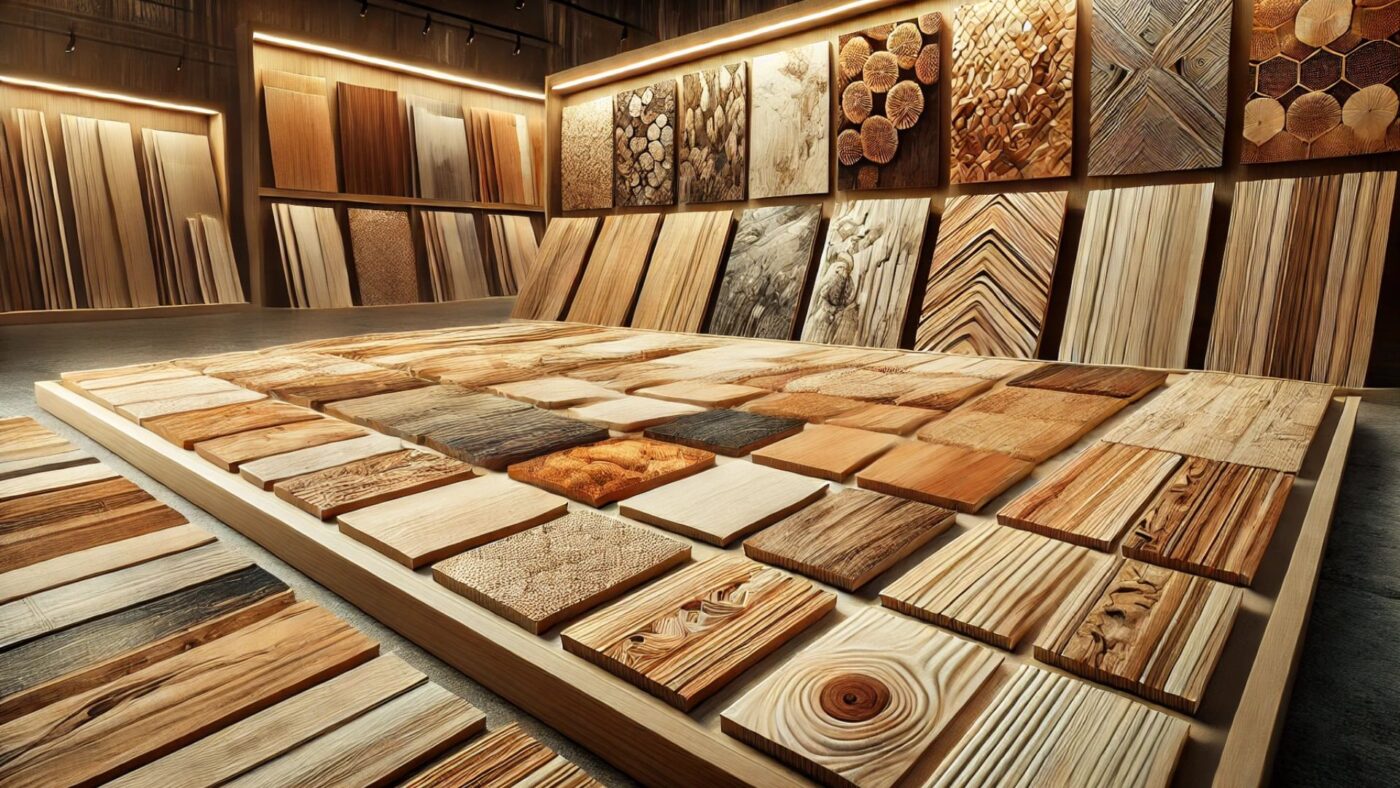Veneer Sheets, Wood Veneer
How to Choose the Right Wood Veneer Sheets
Wood veneer sheets are versatile materials used in applications, from furniture to cabinetry. Choosing the right wood veneer sheets is essential for achieving the desired look and performance. Whether working on a DIY home improvement project or manufacturing high-end furniture, understanding the key factors in selecting the right veneer is crucial. Below, we’ll walk you through important considerations when choosing wood veneer sheets for your next project.
1. Determine the Type of Wood Veneer You Need
Wood veneer sheets are available in a wide range of wood types, from traditional species like oak and walnut to exotic varieties such as teak or ebony. The first step in choosing the right veneer is to decide which wood species best fits your project. Consider the aesthetic qualities of the wood, such as color, grain patterns, and texture. You’ll also want wood’s durability, as some species are more resistant to wear and tear than others. Some commonly used wood types for veneer sheets include:
- Oak – Known for its classic look and durability.
- Walnut – Offers a rich, dark color with intricate grain patterns.
- Maple – A light-colored wood known for its subtle grain.
- Teak – A highly durable and exotic wood with a warm tone.
Choosing the right species ensures your wood veneer sheets meet the aesthetic and functional requirements.
2. Understand the Veneer Cut Type
The cut of the wood veneer sheets significantly affects its appearance and texture. There are several types of cuts, each with unique characteristics. Understanding these cuts will help you select the best option for your design. Common cuts include:
- Rotary Cut – A continuous peel with a more uniform and consistent pattern, often used for producing large panels.
- Flat Cut (Crown Cut) – A method where the log is sliced parallel to the growth rings, producing a more traditional look with visible grain patterns.
- Quarter Cut – Creates a more consistent, vertical grain pattern, often preferred for more modern applications.
- Rift Cut – Results in a straight, vertical grain pattern, providing a clean and uniform look, often used in contemporary furniture and cabinetry.
Each cut offers a different aesthetic and texture, so choosing the right cut for your design style is key.
3. Consider the Veneer Thickness
The thickness of wood veneer sheets can vary depending on the application and desired effect. Veneers typically range from 0.5mm to 3mm thick. The thinner the veneer, the more flexible it is for applications like curved surfaces, but it may be more fragile and prone to damage. Thicker veneers, are sturdier and offer a richer, more durable finish but may require more effort.
- Thin veneers (less than 1mm) are ideal for flexible applications and are used in laminates.
- Thicker veneers (over 1mm) are often used for fine furniture, cabinetry, and high-quality finishes that need extra durability.
Choose the right thickness based on the intended use and your project’s structural requirements.
4. Match the Veneer with Your Project’s Environment
The environment in which the wood veneer sheets will be used plays an important role in your selection. For example, if the veneer is for furniture exposed to sunlight, you’ll want to choose a veneer that is resistant to fading. Similarly, if the veneer will be in a high-humidity area (like a kitchen or bathroom), opt for a more durable veneer species that can withstand moisture.
Consider these environmental factors when choosing your wood veneer sheets:
- UV Resistance – Some veneers may be more prone to fading when exposed to sunlight.
- Moisture Resistance – Choose for areas like kitchens or bathrooms.
- Scratch Resistance – Harder species are ideal for surfaces with frequent contact or wear.
Choosing the right veneer to withstand its environment is crucial to its long-term performance.
5. Consider Sustainability and Sourcing
Sustainability is an increasingly important factor when choosing wood veneer sheets. Look for suppliers who provide eco-friendly options, such as veneers made from sustainably harvested wood or certified by organizations like the Forest Stewardship Council (FSC). Opting for responsibly sourced veneers helps protect the environment sourcing practices in the wood industry.
Final Thoughts
Choosing the right wood veneer sheets can elevate the look and durability of your project, whether it’s for furniture, cabinetry, or decorative elements. By understanding the wood type, veneer cut, thickness, environmental factors, and sustainability, you can make an informed decision that ensures a successful and lasting result. For more expert advice and a wide range of high-quality wood veneer sheets, explore the resources and products from trusted suppliers such as JSO Wood Products Inc. to find the perfect veneer for your next project.
